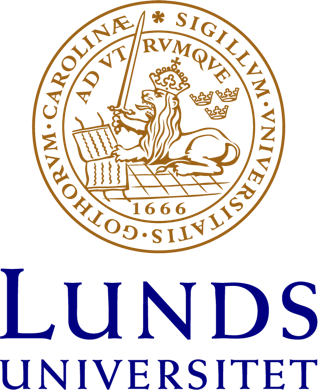Enaction, Embodiment and Language
Mini-symposium
10-11 Elena Cuffari
11-12 Yanna Popova
Lunch
13-14 Popova & Cuffari
14-15 Mittelberg
Kaffe
15:20-16:20 Zlatev
16:20-17:00 General Discussion
Enactivism understands meaning (making) in fundamentally dynamic terms, emerging from a “history of structural coupling” (Varela et al 1991) between organism and environment. The approach has developed in many ways during the last few decades, extending between the simple sense-making of organism to social participation, and more recently to language, understood as a process, or “languaging”. Still, many issues remain unresolved, such as to what extent this approach can deal with narratives, and written fiction in particular, as well as to key concepts in cognitive semiotics such as sign use, and in linguistics such as grammar. The talks in this symposium address these issues, and ultimately aim at a more encompassing paradigm. Linguistic Bodies and Cognitive Linguistics (Elena Cuffari) Developing enaction as a theory of cognition and participatory sense-making as a theory of social cognition, in Linguistic Bodies: The Continuity Between Life and Language (forthcoming, MIT Press), Di Paolo, Cuffari, and De Jaegher propose an analysis of human languaging in terms of our diverse and multiple bodies. I will present an overview of the argument that human languaging is a special form of social agency originating in the primordial tension of participatory sense-making. I will discuss how this view is in sync with the founding logic of cognitive linguistics—that language is a cognitive process—while noting that the philosophical treatment of bodies in enaction theory poses several challenges to traditional assumptions about embodiment in cognitive linguistics. Participatory Sense-Making and How We Read Literary Fiction (Yanna B. Popova) A recent approach to the workings of the human mind, enactivism, understands humans as profoundly social and embodied beings, thus defining human cognitive processes as relational practices of participatory sense-making. Such a dialogic/distributed paradigm in the study of social cognition has already influenced our understanding of language and the language arts. Following my previous work (Popova, 2014, 2015) I argue that narrative understanding presupposes reciprocity between teller and reader – a form of shared agency, a view that transcends text-based or reader-based approaches that have traditionally dominated the study of literature. In this presentation I will further develop the notion of participatory sense-making in relation to two specific narrative experiences: surprise and suspense. Temporality of Sense-Making in Narrative Interactions (Yanna B. Popova & Elena Cuffari) This presentation addresses a specific aspect of temporality as it relates to reading and experiencing narrative fiction. It examines positions on time in philosophy and psychology, and reviews current linguistic theories pertaining to the expression of temporal experience in language. Within an enactive understanding of human cognition it proposes a view of literary reading as a distinct process of participatory sense-making. Narrative interactions between a reader and a narrating consciousness are then considered as processes of resonance between distinct temporal perspectives. We propose a typology of pacings in the narrative flow and elaborate the proposed theoretical framework on a number of examples taken from literary fiction. Gestures as image schemas and force gestalts: A dynamic-systems approach augmented with motion-capture data analyses (Irene Mittelberg, Aaachen) Embodied image schemas are central to experientialist accounts of meaning-making. Research from several disciplines has evidenced their pervasiveness in motivating form and meaning in both literal and figurative expressions across diverse semiotic systems and art forms (e.g., Gibbs and Colston, Hampe, Johnson, Lakoff, and Mandler). This paper aims to highlight structural similarities between dynamic image schemas and force schemas, on the one hand, and hand shapes and gestural movements, on the other. Such flexible correspondences between conceptual and gestural schematicity are assumed to partly stem from experiential bases shared by incrementally internalized conceptual structures and the repeated gestural (re-)enacting of bodily actions, as well as more abstract semantic primitives (Lakoff).Gestures typically consist of evanescent, metonymically reduced hand configurations, motion onsets or movement traces that minimally suggest, for instance, a PATH, the idea of CONTAINMENT, an IN-OUT spatial relation, or the momentary loss of emotional BALANCE. First, I discuss previous work on how image schemas, force gestalts, and mimetic schemas may operate in hand gestures and body postures. Drawing on Gibbs’ (2005) dynamic systems account of image schemas, I then introduce an array of tendencies in gestural image schema enactments: body-inherent/self-oriented (body as image-schematic structure; forces acting upon the body); environment-oriented (material culture including spatial structures), and interlocutor-oriented (intersubjective understanding). Examples of these patterns are enriched by video and motion-capture data, showing how numeric kinetic data allow one to measure the temporal and spatial dimensions of gestural articulations and to visualize movement traces. The phenomenological Semiotic Hierarchy: From operative to linguistic intentionality (Jordan Zlatev) I present a revised version of the Semiotic Hierarchy (Zlatev 2009), rethought with the help of phenomenology. In general, any kind of meaning is understood as different kinds of intentionally, from operative on a pre-conscious level, via perceptual on the level of subjectivity, joint on the level of intersubjectivity, signitive on the level of sign use, to linguistic. On all levels, meaning making is constrained by level-specific normative structures such as the body schema, emotions, conventions, signs and grammatical rules, which all derive from subject-world interactions. Thus, the theory incorporates insights from enactivism, without subscribing to its anti-structuralist and anti-representationalist tendencies.